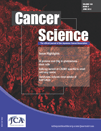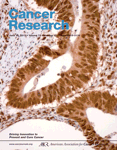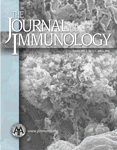Cancer Res.:组蛋白去乙酰酶抑制剂或可发挥抗癌功效
2012-06-28 bo 本站原创
6月25日,Cancer Research 在线报道,组蛋白去乙酰酶抑制剂(HDI)可影响化疗药物细胞膜转运蛋白ABCG2的多态性变体的表达和转运。这拓展了HDI的临床应用空间。 组蛋白去乙酰酶抑制剂(HDI)在临床试验中已经表现出一定的疗效,但很显然,它们最有效的应用价值尚未完全开发出来。 这项研究表明,HDI可影响化疗药物外排转运蛋白ABCG2的表达。ABCG2可为正常组织提供保护。作为人
6月25日,Cancer Research 在线报道,组蛋白去乙酰酶抑制剂(HDI)可影响化疗药物细胞膜转运蛋白ABCG2的多态性变体的表达和转运。这拓展了HDI的临床应用空间。
组蛋白去乙酰酶抑制剂(HDI)在临床试验中已经表现出一定的疗效,但很显然,它们最有效的应用价值尚未完全开发出来。
这项研究表明,HDI可影响化疗药物外排转运蛋白ABCG2的表达。ABCG2可为正常组织提供保护。作为人类ABCG2最常见的一种变体,Q141K突变可损害ABCG2的表达,定位,功能,从而减少药物清除,并增加化疗毒性。
研究显示,ABCG2的Q141K突变体被完全处理,但驻留在核周结构--聚集体中。这正是错误折叠的蛋白质聚集的场所。在筛选可以纠正ABCG2突变体的表达,定位和功能异常的治疗性化合物时,研究者发现,微管干扰剂秋水仙碱可诱导ABCG2的Q141K突变体从聚集体重新定位到细胞表面上。更引人注目的是,研究者还发现,HDI可产生类似的效果,并且还使蛋白表达恢复到野生型的水平,可恢复ABCG2介导特定药物外排的活力。
值得注意的是,HDI没有修饰聚集体的结构,而是解救新合成的蛋白质,阻止聚集体靶向ABCG2蛋白。这提示,HDI通过引发马达蛋白的改变干扰沿微管结构的运输过程。
总之,这些结果表明,HDI是如何恢复ABCG2蛋白Q141K突变体的野生型功能的。更广泛的,该研究结果扩大HDI在临床上的潜在用途。

doi:10.1016/j.cell.2011.10.017
PMC:
PMID:
Histone Deacetylase Inhibitors Influence Chemotherapy Transport by Modulating Expression and Trafficking of a Common Polymorphic Variant of the ABCG2 Efflux Transporter
Agnes Basseville1, Akina Tamaki1, Caterina Ierano1, Shana Trostel1, Yvona Ward2, Robert W. Robey1, Ramanujan S. Hegde3, and Susan E. Bates1
Histone deacetylase inhibitors (HDI) have exhibited some efficacy in clinical trials, but it is clear that their most effective applications have yet to be fully determined. In this study, we show that HDIs influence the expression of a common polymorphic variant of the chemotherapy drug efflux transporter ABCG2, which contributes to normal tissue protection. As one of the most frequent variants in human ABCG2, the polymorphism Q141K impairs expression, localization, and function, thereby reducing drug clearance and increasing chemotherapy toxicity. Mechanistic investigations revealed that the ABCG2 Q141K variant was fully processed but retained in the aggresome, a perinuclear structure, where misfolded proteins aggregate. In screening for compounds that could correct its expression, localization, and function, we found that the microtubule-disrupting agent colchicine could induce relocalization of the variant from the aggresome to the cell surface. More strikingly, we found that HDIs could produce a similar effect but also restore protein expression to wild-type levels, yielding a restoration of ABCG2-mediated specific drug efflux activity. Notably, HDIs did not modify aggresome structures but instead rescued newly synthesized protein and prevented aggresome targeting, suggesting that HDIs disturbed trafficking along microtubules by eliciting changes in motor protein expression. Together, these results showed how HDIs are able to restore wild-type functions of the common Q141K polymorphic isoform of ABCG2. More broadly, our findings expand the potential uses of HDIs in the clinic.
本网站所有内容来源注明为“梅斯医学”或“MedSci原创”的文字、图片和音视频资料,版权均属于梅斯医学所有。非经授权,任何媒体、网站或个人不得转载,授权转载时须注明来源为“梅斯医学”。其它来源的文章系转载文章,或“梅斯号”自媒体发布的文章,仅系出于传递更多信息之目的,本站仅负责审核内容合规,其内容不代表本站立场,本站不负责内容的准确性和版权。如果存在侵权、或不希望被转载的媒体或个人可与我们联系,我们将立即进行删除处理。
在此留言














#抑制剂#
69
#Res.:#
54
#组蛋白#
74